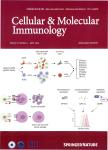Ovarian autoimmune disease: clinical concepts and anima models
Ovarian autoimmune disease: clinical concepts and anima models作者机构:Department of Anatomy and Cell Biology University of Kansas Medical Center Kansas City KS USA Department of Molecular and Integrative Physiology University of Kansas Medical Center Kansas City KS USA Research Center for Immunity and I mmunotherapies Children's Hospital and Regional Medical Center and Division of Rheumatology Department of Pediatrics University of Washington Seattle WA USA Department of Internal Medicine University of Kansas Medical Center Kansas City KS USA Present address: Department of Pathobiology and Diagnostic Investigation Michigan State University College of Veterinary Medicine East Lansing MI USA
出 版 物:《Cellular & Molecular Immunology》 (中国免疫学杂志(英文版))
年 卷 期:2014年第11卷第6期
页 面:510-521页
核心收录:
学科分类:090603[农学-临床兽医学] 0710[理学-生物学] 07[理学] 071009[理学-细胞生物学] 09[农学] 0906[农学-兽医学] 0901[农学-作物学] 090102[农学-作物遗传育种]
主 题:Ovarian autoimmune clinical concepts animal models
摘 要:The ovary is not an immunologically privileged organ, but a breakdown in tolerogenic mechanisms for ovary-specific antigens has disastrous consequences on fertility in women, and this is replicated in murine models of autoimmune disease. Isolated ovarian autoimmune disease is rare in women, likely due to the severity of the disease and the inability to transmit genetic information conferring the ovarian disease across generations. Nonetheless, autoimmune oophoritis is often observed in association with other autoimmune diseases, particularly autoimmune adrenal disease, and takes a toll on both society and individual health. Studies in mice have revealed at least two mechanisms that protect the ovary from autoimmune attack. These mechanisms include control of autoreactive T cells by thymus-derived regulatory T cells, as well as a role for the autoimmune regulator (AIRE), a transcriptional regulator that induces expression of tissue-restricted antigens in medullary thymic epithelial cells during development of T cells. Although the latter mechanism is incompletely defined, it is well established that failure of either results in autoimmune-mediated targeting and depletion of ovarian follicles. In this review, we will address the clinical features and consequences of autoimmune-mediated ovarian infertility in women, as well as the possible mechanisms of disease as revealed by animal models.



